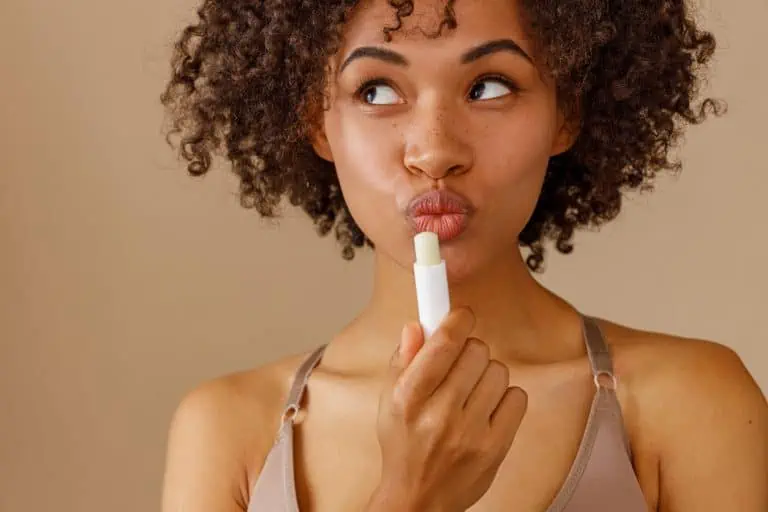13 Best Lip Balms for Dry Lips According to a Dermatologist

Choosing a lip balm seems pretty simple — flavored or unflavored? Tinted or untinted? Stick, pot or tube? But not all lip balms are created equal, and as you may have come to suspect, some can make dry lips feel worse. If you’re less than thrilled with your current lip balm, it’s time to start looking at ingredient lists or product recommendations to find the best lip balm to soothe and protect your dry, irritated or flaky lips.
“A surprising number of popular lip balms on the market contain ingredients that can irritate dry, chapped lips,” said Jeriel Weitz, DO, a board-certified dermatologist with Riverchase Dermatology. “If your lip balm makes your lips tingle, sting or burn, or if it makes your lips feel drier shortly after you apply it, stop using it.”
The best lip balms seal in moisture without inflaming or exfoliating the lips. Read on to learn what ingredients and products Dr. Weitz recommends.
Why are my lips so dry?
First things first: Why do you have dry lips to begin with? There are a few possible dry lip causes.
- The skin on the lips is very thin, and unlike the skin on the rest of the face, it lacks oil glands, which makes lips vulnerable to dryness, peeling, itching and cracking. Dry, cold air makes lips more parched, as does sun exposure. Other factors that can cause dry lips include:
- Dehydration from not drinking enough fluids
- Breathing through your mouth
- Taking certain medications, such as Accutane (used to treat severe cystic acne), lithium and certain chemotherapy drugs
- Licking, biting or picking at your lips
- Holding jewelry, paper clips or other metal objects in your mouth
How to get rid of dry lips: Lip balm ingredients to embrace
- To moisten and heal dry, chapped lips, choose a lip balm with one or more of the ingredients below. All of these ingredients act as occlusives, which means they create a physical barrier to seal in moisture and protect the lips from irritants.
- Petroleum jelly (petrolatum)
- Sunflower oil
- Cocoa butter
- Sweet almond oil
- Argan oil
- Castor seed oil
- Ceramides
- Dimethicone
- Hemp seed oil
- Mineral oil
- Shea butter
- Titanium oxide or zinc oxide (sun protective ingredients)
In addition to these occlusive ingredients, some lip balms contain humectants, which attract water. Humectants include glycerin, hyaluronic acid, aloe vera, honey, propylene glycol and urea.
Antioxidants such as vitamin C, vitamin E, niacinamide and polyphenols can also be beneficial. “Antioxidants work by preventing damage caused by environmental aggressors such as UV rays and pollution,” Dr. Weitz explained.
Lip balms ingredients to avoid
To avoid irritating dry, chapped lips, steer clear of lip balms with these ingredients. Some of them, such as camphor and menthol, are commonly found in “medicated” lip balms.
- Camphor
- Eucalyptus
- Flavors such as cinnamon, citrus and mint
- Fragrance
- Menthol
- Octinoxate or oxybenzone
- Phenol (phenyl)
- Propyl gallate
- Salicylic acid
Best lip balm picks
Below are Dr. Weitz’s favorite lip balms for day and night, all of which feature rich, hydrating, non-irritating ingredients.
Best lip balms with SPF
Wear a lip balm with SPF 30 or higher during the day so the sun won’t dry out or burn your lips. SPF lip balms also help protect you against lip cancer. Add one of the picks to your morning skincare routine and reapply as needed.
- Aquaphor Lip Protectant + Sunscreen
- Vanicream Lip Protectant/Sunscreen
- Sun Bum Mineral SPF 30 Sunscreen Lip Balm
- Raw Elements Lip Rescue SPF 30
- Salt & Stone Sunscreen Lip Balm SPF 30
- EltaMD UV Lip Balm Broad-Spectrum SPF 36
Best nighttime lip balms
Once the sun has set, you can switch to a lip balm that doesn’t contain SPF. Even if your lips don’t feel dry before you get in bed, it’s a good idea to apply lip balm to keep them from drying out overnight, especially if your bedroom is dry or you tend to breathe through your mouth when you sleep.
- Vaseline Lip Therapy
- Aquaphor Lip Repair
- SkinCeuticals Antioxidant Lip Repair
- La Roche Posay Nutritic Lip Balm
- Ilia Lip Wrap Reviving Balm
- Bioderma Atoderm Restorative Lip Balm
- Dr. Dan’s CortiBalm (contains 1% hydrocortisone)
When to see a dermatologist
Using a non-irritating lip balm, drinking plenty of water and running a humidifier when the indoor air is overly dry should go a long way toward preventing and healing dry, chapped lips. Still have a parched pucker after a few weeks of TLC? Make an appointment with your dermatologist to rule out an underlying condition.
Health conditions that can contribute to dry lips include hypothyroidism (low thyroid) and certain autoimmune diseases, such as Sjögren’s syndrome and Crohn’s disease. Another condition, angular cheilitis, can lead to redness, inflammation and cracks in the corners of the lips. It’s caused by an overgrowth of a yeast called Candida that can happen when saliva collects in the corners of the lips. If your lips are constantly inflamed and scaly, it’s possible that you’re allergic to or sensitive to an ingredient in your lipstick or toothpaste.
Outdoor laborers and long-term sun worshippers have one more condition to look out for: farmer’s lip or sailor’s lip, known medically as actinic cheilitis. This precancerous lip condition is caused by chronic sun exposure. Symptoms include chronically dry, scaly or peeling lips that may have a sandpapery texture, whitish or yellowish patches and a blurred border between the lip and the skin. Treating this condition can prevent it from progressing to lip cancer.
Medically reviewed by Jeriel Weitz, DO
Written by Jessica Brown, a health and science writer/editor based in Nanuet, New York. She has written for Water‘s Edge Dermatology, Prevention magazine, jnj.com, BCRF.org, and many other outlets.


